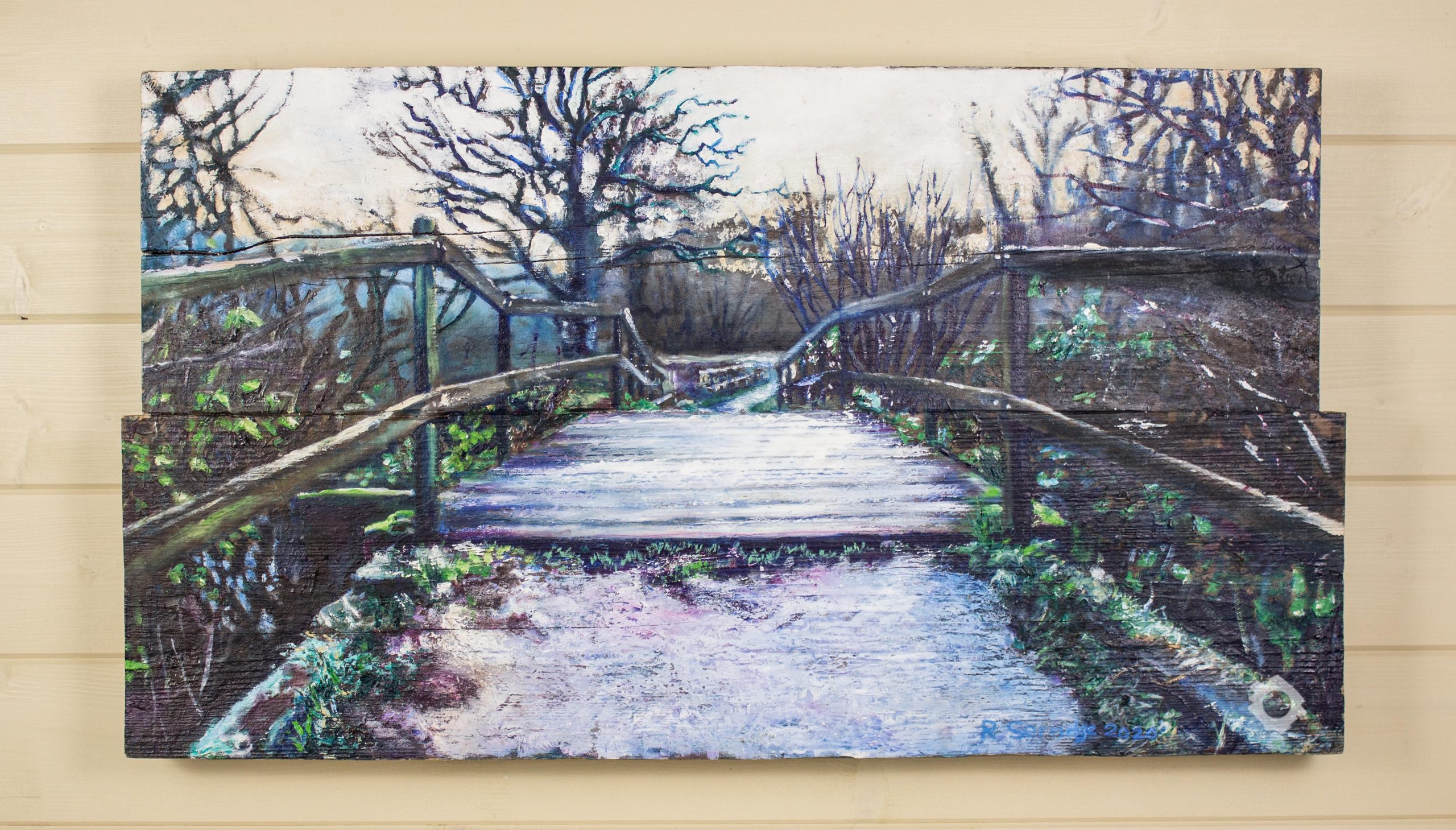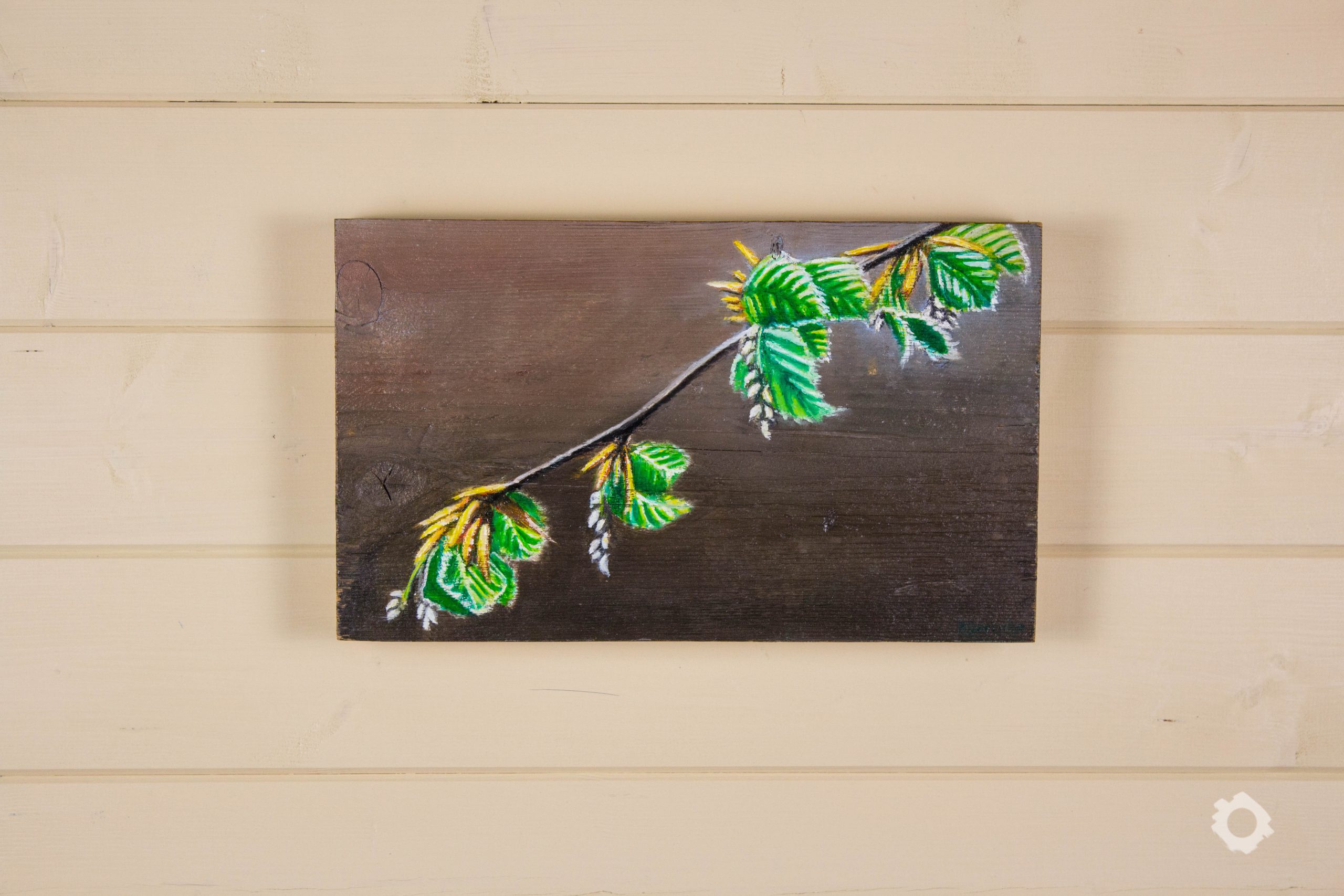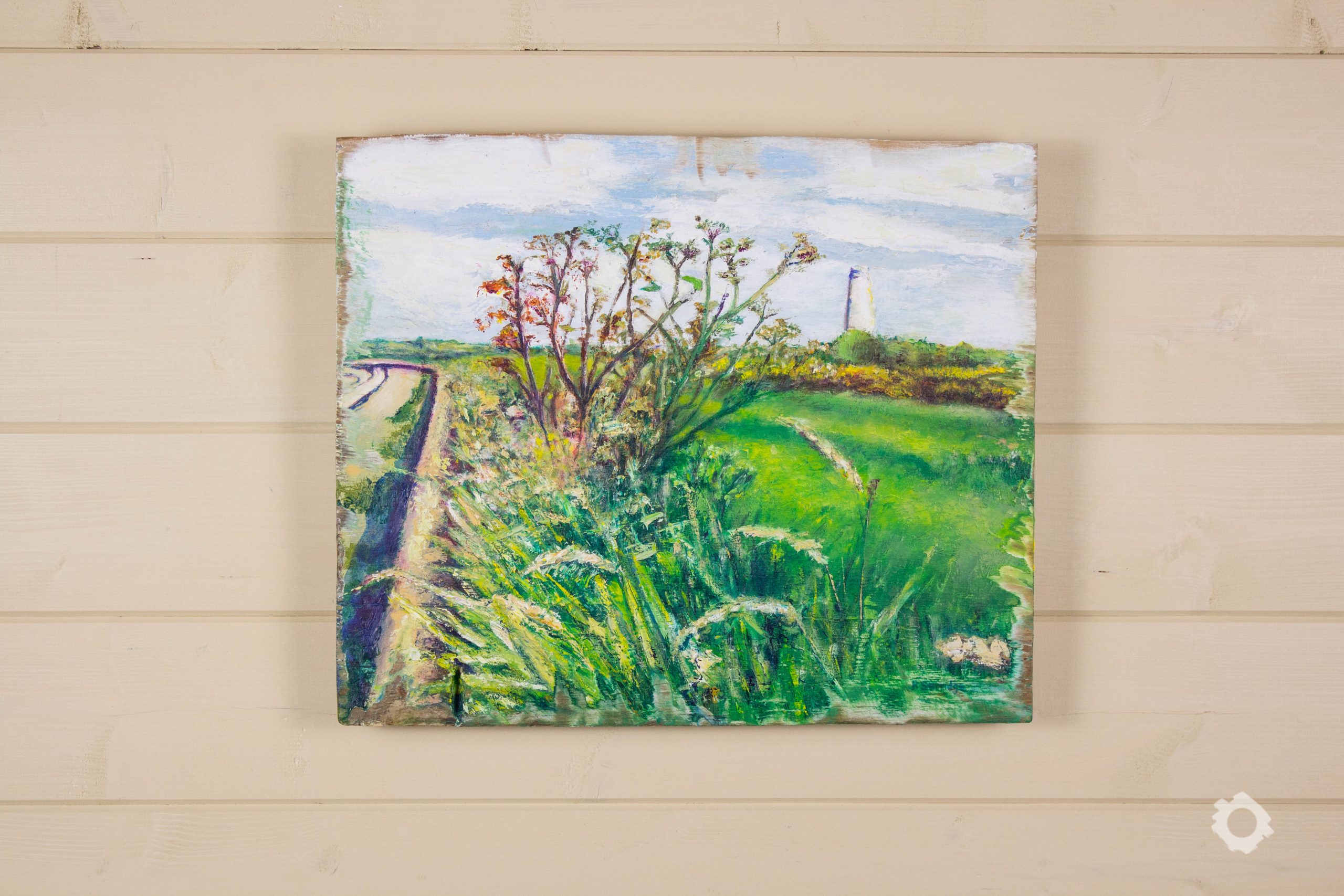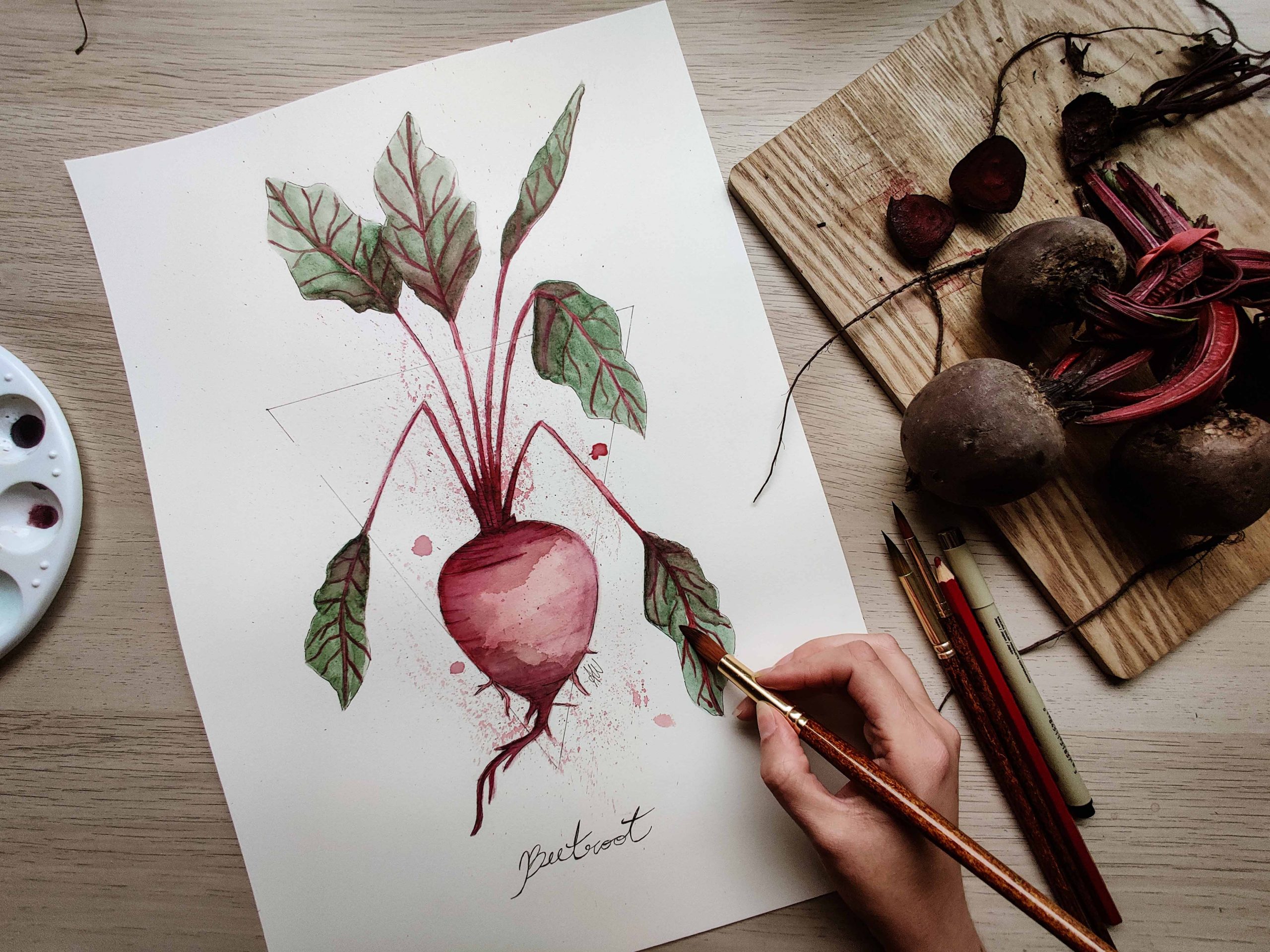At dot-art we make internal efforts to be educated on issues around climate change, are proactively carbon neutral and have recently discussed with our dot-art Artists how they make their artistic practice sustainable and considerate of the planet.
For Richard Serridge this consciousness about the use of materials when producing his artwork means turning to reclaimed and reused wood. Giving a second life to the material is of course good for the environment but it is also good for the art! Adding an interesting textural ground to his brilliant paintings. Below Richard tells us more:
Richard, you use reclaimed and recycled grounds such as pine and plywood – How did you get started using this material?
When studying at University, I actually started painting quite traditionally using canvas or flat board, but I was obviously pushed to experiment further. I remember going on a trip to London and seeing another artist in one of the commercial galleries there painting coastal scenes on pieces of reclaimed timber and I instantly loved the idea that the object itself was as important as the painting. I actually completed my degree doing sculpture work, again using reclaimed materials and that part of my practice reflected our impact as a species, so it is all a natural progression. I have been conscious about our affect on the environment for a long time regarding waste, so that further reinforces my reasoning.

What significance does this material have to you and your practice?
It’s significant, mainly because it adds an extra dimension to my practice that otherwise wouldn’t exist. A lot of the wood for example are offcuts from home repairs or other projects since we live in a 1930s house that often requires maintenance.
I try and limit my impact as much as possible, by limiting my energy usage and avoiding things wrapped in plastic, like so much is these days, however I would like to reduce waste even further withing my practice in future.
How long have you been working in this way?
I experimented with these materials and techniques at university between 2014 and 2017, but I returned to painting properly around 4 years ago after acquiring a large amount of old scaffold boards to build shelves with.
I keep referring to wood, but I plan to experiment with more materials in future and we have plenty of tile offcuts at the moment, which might be interesting to experiment with.

Does painting on reclaimed wood have an impact on the technique or subject?
It definitely has an impact on my technique. I actually prime the material with clear gesso, so that the colour of my chosen ground forms the base colour for the piece. As a result, my paintings start with quite earthy colours, mainly browns and greens.
In fact, I’d say I have quite an odd method of reading a subject through layering, building form and structure, then applying a toning layer and repeating this process over and over rather than separate block areas like some other painters.
Using a palette knife or the tip of my finger for a lot of the textural work, picks up the existing texture of my chosen ground to create something most natural than anything I would achieve purely myself.
As for the subject, I would say the material I choose responds to the subject more than the subject responds to the material. Since I was a child, my dad would take us for days out around Wirral and I have gained a great deal of respect for the nature reserves and history I have local to me. I pick subjects that have a real sense of place and atmosphere to them and try my best to place the viewer into that environment.

Another dot-art Artist thinking eco is Anne Wiziack, creating her own inks for her practice. We spoke to Anne to find out more:
How did you get started making your own ink?
I was inspired by a slow fashion brand in Brazil, Flavia Aranha, she dyes the clothes with natural ink from plants and vegetables and in her website she shares a little of the creation process.
I have admired her work for a long time and when I started to make more botanical paintings and sell them, I came across the challenge of being as sustainable as possible. I’m currently using 100% cotton paper for my work, I only print the digital copy when someone places an order and I’m trying to avoid plastic on the packaging, but when I have to use it, I have a biodegradable one.
One day I was cooking beetroot and I thought it could be an amazing colour, so that moment I remembered the work of Flavia Aranha and decided to do something similar, but for my paintings. Since there I’ve been developing my own inks and making some paintings with them.
Can you tell us about what goes into them?
The basic recipe is the source of the ink, like berries, flowers or vegetables with a little bit of water (it depends on the source, sometimes you don’t need to add water), a pinch of salt, gum arabic and wintergreen oil.
How important is it to your artwork to use these materials?
For my work, using natural ink adds value to my paintings and it reaffirms the message I want to transmit about sustainable art and how beautiful is nature, not just its look, nutrients, but also its colour.

Are you conscious of your materials and their sustainability when you are creating art?
Yes, I’m 100% conscious of my impact on the environment. From my food to my art, I try to be eco-conscious and get the most sustainable products.
As I mentioned before, I’m using eco-friendly material, even my business card is made with seed paper, which means you can plant it instead of throwing it away.
What are the challenges of making natural ink?
It is wonderful how a red cabbage can have a purple colour when you are cooking it and it can turn to blue after a while. One of the challenges is understanding how the colours work and what will be the final tone when it is applied on the paper.
Also, I’m still figuring out how to preserve them longer. I’m in the process of learning with my tests, so it is important to store them in a cool place, away from the light, as well as to have a good preservative that is not going to affect the paper.

Do you see a connection between art and the environment? What is this to you?
For me art is a way to say something and express a feeling or a cause, it can be a criticism of our society or showing how something is important, like the environment. I believe my mission in this world is to touch people’s lives with the value of being kind with the environment and animals.
I’m vegan, my first degree is in environmental engineering and my art is about nature, sustainability, also about female empowerment and my culture, Brazil.

Discover more of Anne Wiziack and Richard Serridge’s work on our online shop!


